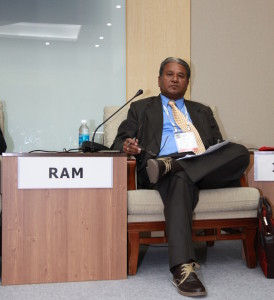But the paradox is that waste may have the potential to be the most sustainable energy resource, according to experts who discussed the issue at the World Energy Congress on 17 October.
The average individual generates about 4.4 pounds of waste per day. A World Bank forecast says the current 1.3 billion tons of waste produced globally each year will rise to 2.2 billion tons in 2025 as low-income countries consume more and more. Most of that waste goes into landfills, said Maria Sunér Fleming, Director of Energy and Climate Policies at the Confederation of Swedish Enterprise. That’s because most jurisdictions around the world fail to follow a “step hierarchy” that consists of first reducing waste and then re-using and recycling it before recovering energy through such means as incineration for heat or electricity and producing biogas. This is a preferable alternative to consigning waste to the landfill and letting it fester to produce environmentally harmful methane. Using such a process, she said, Sweden has reduced the proportion of waste going to landfills from 70% to 1%.
“If you use waste separation before it goes to the dump yard, the quantity that goes into the dump yard is reduced,” said Babu Ram, Chief Power Engineer for the African Development Bank.

New pricing policies can promote the efficient use of waste. “Projects that move the fastest seem to have a discrete secondary benefit,” said G. Scott Stallard, Vice President for Black & Veatch, the engineering and construction firm.
“Sustainability is about financial issues,” not just environmental concerns, said Gary Shepherd, Managing Director of the UK firm Gradsol, which produces advanced waste management technology. Waste management officials should “get away from the caveman approach and look at waste as a resource,” he said.
Waste-produced energy now accounts for only “a fraction of 1%,” said Alessandro Clerici, the WEC Executive Chair of the World Energy Resources. He explained that widespread NIMBY (Not In My Back Yard) sentiment is making it difficult to build any sort of facility, whether it’s an incinerator or a landfill, to deal with waste. “Do you send it to the moon?” he asked.
This news story is based on the Bottom Line session, “Waste to energy: Valuing the dirty job”, at the 2013 World Energy Congress.





